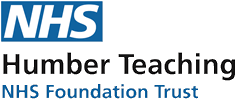CPIPs UK
What is ‘CPIP UK’?
CPIP UK is a follow-up programme for children with cerebral palsy or suspected cerebral palsy, allowing early detection of changes in muscles and joints with the option of earlier treatment for your child. This may prevent problems developing in the future.
What is Cerebral Palsy?
Cerebral Palsy (CP) is the term used for the physical disorder caused by brain injury or dysfunction occurring before the age of two. There are many different causes of cerebral palsy and the degree of functional impairment varies in each child from nearly normal function, to pronounced functional impairment.
Children with cerebral palsy often have increased tone (spasticity) in certain muscles while other muscles may be weakened. This can interfere with children’s ability to move and to learn to walk. Spasticity can also cause pain, and over time, shortening of muscles and tendons. When joints do not move normally they become permanently stiff because the soft tissues tighten around them (known as a contracture).
In some children, the imbalance in the hip joint can lead to pulling of the head of the thigh bone out of its position in the hip joint leading to hip dislocation. Imbalance in the back, can lead to a curved spine or scoliosis. There are many different treatment methods to decrease spasticity and to prevent contractures and hip dislocation. These may include exercise or stretching and positioning programmes from your physiotherapist, the use of splints during the day or at night or drug treatments to reduce the tightness in muscles. This does not describe all the treatments available. It is very important that the right treatments are available at an early stage to help prevent problems developing in order to achieve the best possible outcome.
What is the purpose of CPIP UK?
The purpose of CPIP UK is to ensure that children with risk of developing contractures or hip dislocation are detected early enabling timely intervention. The goal is that no child should be affected by severe contractures or hip dislocation and that every child should receive the best possible function possible. Research has shown that x-rays of the hip taken at the right time can help us spot this problem earlier – and take steps to reduce the chance of it getting worse.
The follow-up within CPIP UK involves the child’s physiotherapist who will make an assessment of the child’s muscle tone, joint motion, ability and function twice a year until the child is aged six. After that, annual assessment is made until the child reaches adulthood. These assessments help the physiotherapist decide how often your child needs to be seen for treatment and what treatment options are best for your child. Regular assessment and early treatment combine to improve outcomes.
X-Rays
Children with CP should have an x-ray at 2 years of age. If your child is mildly affected you can expect one further x-ray aged 6 years. For those more severely affected there will be annual x-rays until age 8 years and then every other year. This is because there is a greater risk of hip dislocation in more severe cases.
All children will be invited for a final x-ray at age 16.
How successful is CPIP UK?
Children treated under a similar programme in Sweden experienced significantly fewer hip dislocations, significantly fewer children from this group developed major contractures and scoliosis through participation in the programme. There was also a decrease in the number of major orthopaedic operations performed for hip dislocation and the co-operation between different specialists involved in the care of children with cerebral palsy improved. Scotland has this programme in place and it is now being introduced across England.
CPIP UK in Hull/East Yorkshire
If your child has a diagnosis of Cerebral Palsy you will be invited to a CPIP UK assessment. The information from these assessments will be shared with parents, Paediatricians and Orthopaedic Doctors to help plan your child’s treatment and monitor them as they grow and develop.
The assessment works on a traffic light system – indicating areas that require monitoring, immediate action or no concern.
The above information has been taken from CPIPS – Cerebral palsy Integrated Pathway Scotland, Information for Parents Leaflet.
What to wear
Please bring your child in a P.E kit or similar clothing to ensure the physiotherapist is able to carry out the assessment easily.









